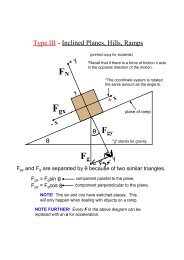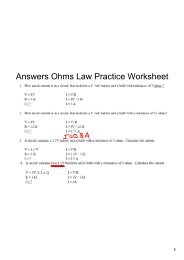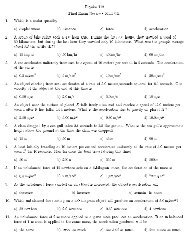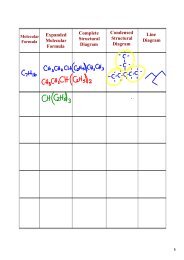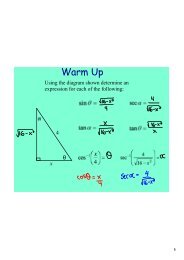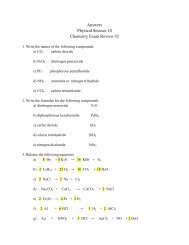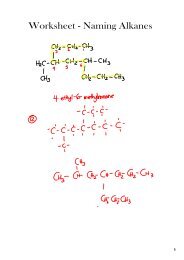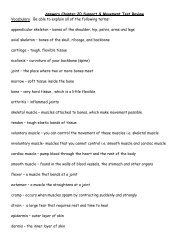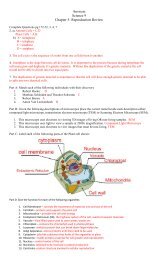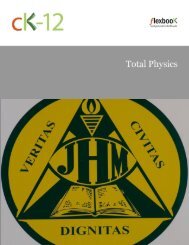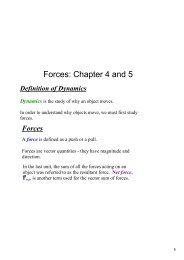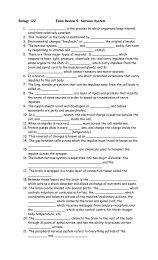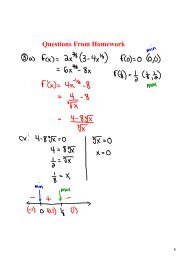Physics Study Guides.pdf - James M. Hill Memorial High School
Physics Study Guides.pdf - James M. Hill Memorial High School
Physics Study Guides.pdf - James M. Hill Memorial High School
Create successful ePaper yourself
Turn your PDF publications into a flip-book with our unique Google optimized e-Paper software.
<strong>Physics</strong>Circular Motion cont.Linear vs. Circular Motion (cont.)Circular motion is similar to linear motion in many ways.Linear Quantity Units Angular Quantity Unitsdisplacement (x) m angular displacement (θ) radvelocity (v) m/s angular velocity (α) rad/sacceleration (a) m/s 2 angular acceleration (ω) rad/s 2mass (m) kg moment of inertia (I) kg•m 2force (F) N torque (τ) N•mmomentum (p) kg•m/s angular momentum (L) kg•m 2 /s• Angular velocity and torque have two directions: clockwise and counterclockwise.• Only the component of torque perpendicular to the radius of rotation will cause an object to accelerate.• Angular acceleration is not the same as centripetal acceleration! Centripetal acceleration always points towardthe rotation axis. Angular acceleration points in or against the direction of angular velocity.• Angular velocity is related to period and frequency:Using angular quantities, we can rewrite the equations for linear motion.•• For constant α,•••PrecessionPrecession is most commonly viewed inthe motion of a spinning top. When thetop’s center of gravity is not directly overthe bottom tip of the top, gravity exertsa torque on the spinning top. Since thetop’s axis itself initially has zero angularmomentum, the whole axis will rotate tocounter the torque from gravity.Image Credit: Xavier Snelgrove, Christopher Addiego,CC-BY-SA 2.5NotesPage 2 of 4




